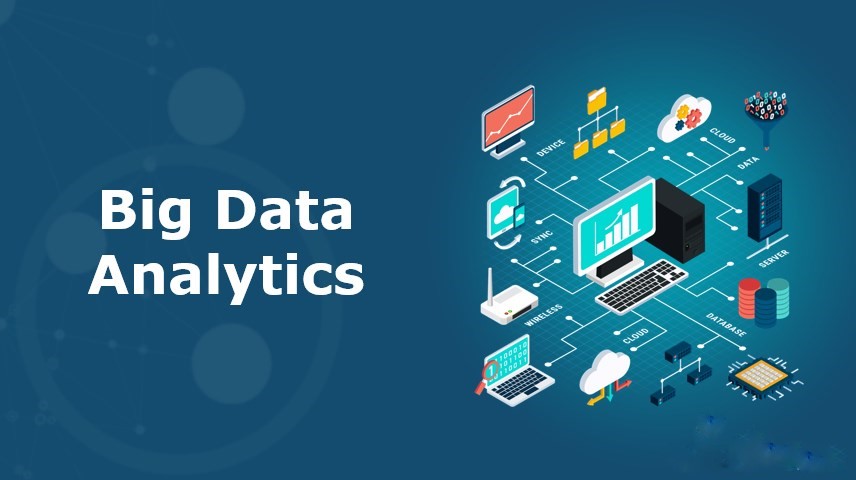
Big Data is among Top 3 Technologies and also having Highest Paid Jobs in this domain.
Benifits of Big Data Training
- Big Data is among the Top 3 Technologies in the Market.
- Data Generation increasingly day by day that’s why Now, Every sector is going to use Big Data.
- So, Every MNC’s Interviewer wants this skill in your Resume.
- You can get upto 12 LPA – 18 LPA Package for your 1st Job (as a Fresher) even you are from private engineering college because skills matters today.
- You will Get Authentic Certification of Big Data that will help you to Crack Job Interview.
Course Description and Objectives
Big Data is the hot new buzzword in IT circles. The proliferation of digital technologies with digital storage and recording media has created massive amounts of diverse data, which can be used for marketing and many other purposes. The concept of Big Data refers to massive and often unstructured data, on which the processing capabilities of traditional data management tools result to be inadequate. Big Data can take up terabytes and petabytes of storage space in diverse formats including text, video, sound, images, and more.
Prerequisites
No Prerequisites Required for this Training. (Everything starts from Scratch to Advanced)
Syllabus of the Course
1. Introduction to Bigdata and Hadoop
- • Introduction to Big Data
- • Big Data Analytics
- • What is Big Data?
- • Four vs of Big Data
- • Challenges of Traditional System
- • Distributed Systems
- • Introduction to Hadoop
2. Hadoop Architecture Distributed Storage (HDFS) and YARN
- • What is HDFS
- • Need for HDFS
- • Regular File System vs HDFS
- • Characteristics of HDFS
- • HDFS Architecture and Components
- • High Availability Cluster Implementations
- • HDFS Component File System Namespace
- • Data Block Split
- • Data Replication Topology
- • HDFS Command Line
- • Demo: Common HDFS Commands
- • Practice Project: HDFS Command Line
- • Yarn Introduction
- • Yarn Use Case
- • Yarn and its Architecture
- • Resource Manager
- • Application Master
- • Demo
3. Data Ingestion into Big Data Systems
- • Data Ingestion Into Big Data Systems.
- • Apache Sqoop
- • Sqoop and Its Uses
- • Sqoop Processing
- • Sqoop Import Process
4. Distributed Processing MapReduce Framework
- • Distributed Processing Mapreduce Framework
- • Distributed Processing in Mapreduce
- • Word Count Example
- • Map Execution Phases
- • Mapreduce Jobs
- • Usage of Combiner
- • Different classes used in Map Reduce
- • Using Distributed Cache
- • Joins in Mapreduce
- • Replicated Join
5. Apache Hive
- • Apache Hive
- • Hive SQL over Hadoop Mapreduce
- • Hive Architecture
- • Hive Metastore
- • Hive DDL and DML
- • Creating New Table
- • File Format Types
- • Data Serialization
- • Hive Table and Avro Schema
- • Hive Optimization Partitioning Bucketing and Sampling
- • Dynamic Partitioning in Hive
- • Bucketing
- • Functions of Hive
- • Different type of Compression
- • Hive Table with Parquet schema
6. Apache Spark Next-Generation Big Data Framework
- • History of Spark
- • Limitations of Mapreduce in Hadoop
- • Introduction to Apache Spark
- • Components of Spark
- • Application of In-memory Processing
- • Hadoop Ecosystem vs Spark
- • Advantages of Spark
- • RDD in Spark
- • Creating Spark RDD
- • Pair RDD
- • RDD Operations
- • Lineage and DAG
- • Spark SQL Processing Data Frames
- • Data Frames
- • Process Data Frame Using SQL Query
Top Comments

Rudra Sir, your big data knowledge is next level, thaks for guiding me in my career, you are the best.

Seriously wants to thanks because this course has changed my life, i got 18LPA Job as a fresher, its like a dream for me.


I was using Spark in my office but now my concepts are more clear, i can understand this more better.
Priya Yadav